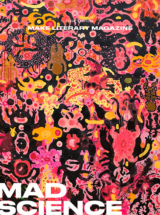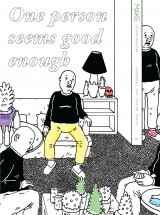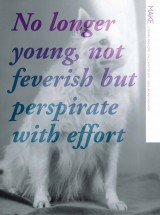
by Angela Moran

Published by University of Chicago Press, 2012 | 345 pages
Timothy Taylor is not the first person to write about music in advertising, nor about the relationship between advertising, business and culture (Thomas Frank has already cornered that market). Taylor's unique contribution is his application of the historical approach to his subject, tracing, through extensive interviews and archival research, the evolution of music in American advertising from the early days of radio to the present. In doing so, he offers both a thorough and detail-rich history of this increasingly ubiquitous part of American life, and a broader meditation on the politics of sound in contemporary culture. He approaches advertising not as peripheral to the products it sells, but as an active, almost self-sustaining industry — an industry that has, from its tentative beginnings, transformed its function from a means of informing people about a particular product to one that creates markets and demand, and sets trends. In other words, advertising today sells consumption itself.
Though The Sounds of Capitalism proceeds more or less chronologically, several themes emerge that draw the chapters together and provide a separate, abstracted alternate structure to the work. The impact of technology is a central focus of the book, and is shown to be of foundational significance: the first commercial radio broadcasts in the 1920s and the emergence of the television as a common household appliance in the 1950s have become emblematic of their respective eras and, as one might expect, radio and television play a central role in Taylor's narrative. However, he also notes some less obvious, but no less influential innovations; for instance the barcode, which first became widely used in the 1970s. As he observes, the barcode “allowed retailers to track with great precision who was purchasing what, where, and when,” enabling far greater accuracy in terms of data collection.
Parallel to this runs the development of the science of demographics, from the 1920s' first forays into audience measurement (consumers were frequently polled, and were encouraged to write in with their opinions) to the popularity of psychographics, in which audiences are categorised according to personality traits, interests and values, in the 1980s, to the increasingly sophisticated targeting that is customary today. Taylor argues that the advertising industry, in its adolescence, lagged a step or two behind popular culture, but that from the 1960s onwards it made a concerted effort to associate itself with youth, newness and 'coolness', eventually achieving a position of cultural dominance.
Even after advertisers began to study their audience more closely, they continued to make mistakes — especially in their early attempts to appeal to young people. Despite increasingly sophisticated demographic techniques, Taylor recounts numerous examples of executives taking the pulse of the next generation and getting it wrong, sometimes with astonishing naivety. Such examples often provide an insight into the social upheavals of the era; even in the 1960s, some clients were reluctant to allow rock and roll in their campaigns, we are told, due to their belief that fans of the genre were “devil worshippers.”
Perhaps Taylor's most prominent theme, especially as the book progresses, is the increasingly close relationship between the music and advertising industries. From around the 1930s onwards, certain jingles attained mainstream success as stand-alone songs (1944's "Chiquita Banana" being one highly successful example). During the 1960s and 70s, numerous songs that originated in adverts became hits, and vice versa; artists as famous as Aretha Franklin and Johnny Cash recorded versions of such songs, though the best-known is probably the ambitiously-titled 1971 hit 'I'd Like to Teach the World to Sing', which began its life as 'Buy the World a Coke,' an advertising jingle for Coca-Cola. In fact, as Taylor ably demonstrates, the Cola Wars of this period fostered a spate of such crossovers (curious readers can listen to many of these on the book's associated website, which contains a wealth of audio and visual examples). The advent of MTV in the 1980s brought the two industries still closer together, with many of the same people working on commercials and music videos.
As he observes near the end of the book, “I have slowly come to the conclusion that there is no longer a meaningful distinction to be made between ‘popular music’ and ‘advertising music’.” Taylor's phrase “the conquest of culture,” deliberately reminiscent of Thomas Frank's “conquest of cool,” has vaguely menacing overtones. Though he tries to mask this impression with an air of academic neutrality, it is hard to ignore: when he talks about the way people have come to construct their sense of identity through consumer choices — the clothes they wear, the music that they listen to — or describes the acquisitiveness and American Psycho-esque obsession with coolness of the 1980s, the sense of loss is palpable. Though he disowns the sentiment itself, he quotes one industry musician's lament that “there is no counterculture anymore; there is only culture, and it is made by commercial interests.” The advertising industry, says Taylor, has finally succeeded in positioning itself at the cutting edge. Its rhetoric is about creativity, originality and art — brand awareness is no longer enough; the brand itself must be part of popular culture.
Though he ends the book on a cautiously positive note, Taylor doesn't seem fully convinced of his own conclusion. In the final pages he tries to make the case that advertisers have heroically carved out a place for creativity and freedom even within the 'iron cage' of their industry’s imperative to sell 'needless commodities' and cynically push 'the ideologies of consumption', but the plea comes too late. His nostalgia for a noncommercial culture seems too sincere, and the distinction between greedy, business-orientated clients and free-spirited advertising agency workers too simplistic. That said, Taylor's contribution to the scholarship of music, advertising, business and culture is significant, and the issues he brings up critically important. The Sounds of Capitalism is meticulously researched and compellingly presented, and it is no less valuable because it raises more questions than it answers.
Originally from the UK, Caroline Waight is a graduate student at Cornell University. Her work focuses on music in the early twentieth century.















click to see who
MAKE Magazine Publisher MAKE Literary Productions Managing Editor Chamandeep Bains Assistant Managing Editor and Web Editor Kenneth Guay Fiction Editor Kamilah Foreman Nonfiction Editor Jessica Anne Poetry Editor Joel Craig Intercambio Poetry Editor Daniel Borzutzky Intercambio Prose Editor Brenda Lozano Latin American Art Portfolio Editor Alejandro Almanza Pereda Reviews Editor Mark Molloy Portfolio Art Editor Sarah Kramer Creative Director Joshua Hauth, Hauthwares Webmaster Johnathan Crawford Proofreader/Copy Editor Sarah Kramer Associate Fiction Editors LC Fiore, Jim Kourlas, Kerstin Schaars Contributing Editors Kyle Beachy, Steffi Drewes, Katie Geha, Kathleen Rooney Social Media Coordinator Jennifer De Poorter
MAKE Literary Productions, NFP Co-directors, Sarah Dodson and Joel Craig